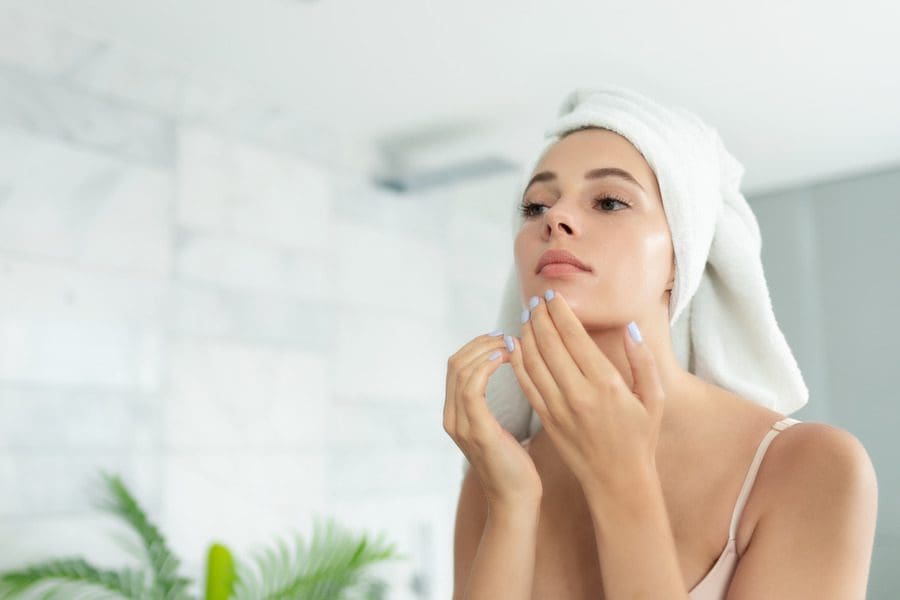You may already be familiar with acne, but if not, let us fill you in: Acne is a skin condition that occurs when your pores become plugged with oil and dead skin cells, causing blackheads, whiteheads, and pimples. And while we often associate acne with teenagers, it affects people of all ages.
Cystic acne is a type of acne where pus-filled cysts form deep under the skin. These cysts are often formed by trapped bacteria, causing the area to become red, swollen, and painful. When these cysts burst, the infection spreads, spawning more breakouts. Here, we’ll look at the symptoms and causes of cystic acne and some ways to treat and prevent it.
What Are the Symptoms of Cystic Acne?
Cystic acne looks different from regular acne. An acne cyst may be:
- A red lump under the skin
- Painful or tender to touch
- Small as a pea or big as a dime
- Oozing pus from a whitish-yellow head
- Crusty
While cystic acne typically appears on the face because of the number of oil glands, it’s not uncommon to have it on your back, butt, chest, neck, shoulders, and upper arms.
What Causes Cystic Acne?
Doctors can’t pinpoint just one thing that causes cystic acne but have identified a number of things that contribute to the condition, including:
- Menstruation
- Pregnancy
- Menopause
- Polycystic ovary syndrome
- Certain medications
- Some skin products
- Clothing that’s too tight
- High humidity or sweating
- Family history
Despite what you may have been told, these things don’t cause cystic acne:
- Not washing your face enough
- Sexual activity
- Chocolate
- Greasy or spicy foods
How to Treat Cystic Acne
Acne cysts are difficult to treat on your own, which is why we recommend visiting a dermatologist so they can figure out the best course of action. Once you start treatment, don’t become frustrated if it takes months to notice a difference; this is very common. And never, ever try to pop an acne cyst. This can lead to scarring and spreading of the bacteria.
Treatment often includes:
- Antibiotic creams, gel solutions, and lotions to kill bacteria and decrease inflammation
- Oral contraceptives if acne cysts develop during hormone fluctuations related to your menstrual cycle
- Benzoyl peroxide to reduce the number of bacteria on the skin.
- Retinoids and vitamin A derivatives that help slough dead skin cells
Preventing Cystic Acne
Here are some steps you can take to lower your risk of cystic acne:
- Use a mild foaming facial cleanser in the mornings, evenings, and after sweating.
- If you’re experiencing a lot of stress, find an outlet to alleviate some of that stress.
- Apply an oil-free moisturizer if your face feels dry.
- Never sleep in your makeup.
- Try not to touch your face.
- Don’t pick at any pimples or scabs (no matter how badly you want to!)
- Keep your hair washed and away from your face to prevent excess oil from coming into contact with your skin.
- Wear makeup products labeled “oil-free” because they are less likely to clog your pores.
Have you dealt with cystic acne? Share your experience with us in the comments below!







